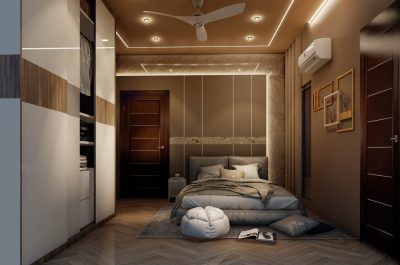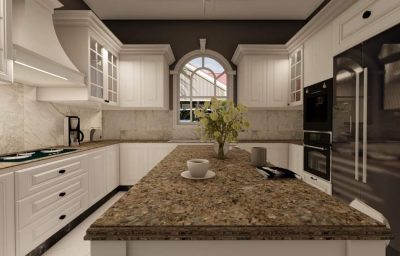Interior Designing
With so many great offers what are you waiting for ?
Interior Designing
Proper Interior designs are provided to our clients including furniture plan rendered images and celling plans.





Interior Design Project For
Mr. Muzaffar Gadhi
Location: Model Town
Interior Designing
Interior designing is a multifaceted art that goes beyond aesthetics, encompassing both form and function. It entails the transformation of any interior space, be it a residential haven, an office space, or a commercial establishment, into a harmonious and purposeful environment. At its core, interior design is about creating spaces that are not only visually appealing but also serve their intended purpose efficiently.
The initial step in interior designing involves a comprehensive assessment of the space and a deep understanding of its intended function. This foundational knowledge guides interior designers in making informed decisions regarding style, color palettes, and materials. Each space has a unique character, and the design approach for a bedroom, for example, differs markedly from that of a living room or an office.
Once the purpose of the space is clarified, designers embark on creating a layout that optimizes space utilization while enhancing the overall aesthetic. This includes meticulous planning of furniture placement, selection of suitable lighting fixtures, and the addition of decorative elements that breathe life into the environment.
Color selection is one of the cornerstones of interior design, as it greatly influences the mood and atmosphere of a room. Warm hues such as reds, yellows, and oranges create an inviting and cozy ambiance, while cooler shades like blues and greens induce a sense of tranquility and relaxation. Neutral tones, like beige and gray, lend an air of sophistication and elegance to the space.
Texture plays an equally vital role in interior design, adding depth and character to a room. The incorporation of various textures, whether through fabrics like curtains, upholstery, and rugs or natural materials such as wood and stone, can elevate the tactile experience within a space.
Lighting is a critical aspect that should never be underestimated. Natural light can amplify the feeling of spaciousness and openness, while artificial lighting can be used strategically to evoke intimacy and coziness. Furthermore, lighting fixtures themselves can serve as design elements, contributing to the visual appeal of the room.
In the realm of interior design, the client’s needs and preferences are paramount. This encompasses considerations like lifestyle, budget, and personal taste. Collaborating closely with clients allows designers to craft a space that mirrors their unique personality and style, resulting in a truly customized environment.
In conclusion, interior design is a holistic discipline that involves meticulous planning and unwavering attention to detail. By delving into the intended function of a space, harnessing the power of color and texture, and understanding the significance of lighting, interior designers can sculpt spaces that are not only aesthetically pleasing but also supremely functional. These carefully crafted environments serve as reflections of the client’s personality and style, elevating the quality of life within them.
Interior designing is a multifaceted art that goes beyond aesthetics, encompassing both form and function. It entails the transformation of any interior space, be it a residential haven, an office space, or a commercial establishment, into a harmonious and purposeful environment. At its core, interior design is about creating spaces that are not only visually appealing but also serve their intended purpose efficiently. The initial step in interior designing involves a comprehensive assessment of the space and a deep understanding of its intended function. This foundational knowledge guides interior designers in making informed decisions regarding style, color palettes, and materials. Each space has a unique character, and the design approach for a bedroom, for example, differs markedly from that of a living room or an office. Once the purpose of the space is clarified, designers embark on creating a layout that optimizes space utilization while enhancing the overall aesthetic. This includes meticulous planning of furniture placement, selection of suitable lighting fixtures, and the addition of decorative elements that breathe life into the environment. Color selection is one of the cornerstones of interior design, as it greatly influences the mood and atmosphere of a room. Warm hues such as reds, yellows, and oranges create an inviting and cozy ambiance, while cooler shades like blues and greens induce a sense of tranquility and relaxation. Neutral tones, like beige and gray, lend an air of sophistication and elegance to the space. Texture plays an equally vital role in interior design, adding depth and character to a room. The incorporation of various textures, whether through fabrics like curtains, upholstery, and rugs or natural materials such as wood and stone, can elevate the tactile experience within a space. Lighting is a critical aspect that should never be underestimated. Natural light can amplify the feeling of spaciousness and openness, while artificial lighting can be used strategically to evoke intimacy and coziness. Furthermore, lighting fixtures themselves can serve as design elements, contributing to the visual appeal of the room. In the realm of interior design, the client’s needs and preferences are paramount. This encompasses considerations like lifestyle, budget, and personal taste. Collaborating closely with clients allows designers to craft a space that mirrors their unique personality and style, resulting in a truly customized environment. In conclusion, interior design is a holistic discipline that involves meticulous planning and unwavering attention to detail. By delving into the intended function of a space, harnessing the power of color and texture, and understanding the significance of lighting, interior designers can sculpt spaces that are not only aesthetically pleasing but also supremely functional. These carefully crafted environments serve as reflections of the client’s personality and style, elevating the quality of life within them.
